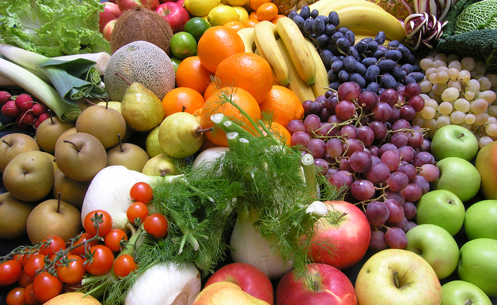Organics Meet Mixed Reception
The organic category is still seeing growth, according to growers and shippers.
“The overall category is showing growth similar to the growth that we experienced back in 2008 prior to the economic depression,” Jim Roberts, vice president of sales with Naples, Fla.-based berry grower-shipper Naturipe Farms LLC, said in an e-mail. Read more after the jump.
Roberts said organic berry growth is especially strong.
“Recent data is showing the organic berry category is experiencing growth nearly twice that of the overall berry category,” Roberts said.
He said the berry category as a whole saw 12.2% growth from 2011 to 2012.
Widespread growth
Others are also noticing this growth.
“Organics is the most-growing part of our business right now,” said Matt Seeley, vice president of marketing, The Nunes Co., Salinas, Calif., which offers organic and conventional products.
The Nunes Co. has added several organic offerings to its product list, including bunching vegetables such as chard and kale varieties, among others.
“Anything we have as a core conventional item, we now offer organically as well,” Seeley said.
Seattle-based Charlie’s Produce is also enjoying growth.
“Sales are up from last year, as they have been every year, and demand is strong,” Diane Dempster, manager of Farmer’s Own, the local organic program at Charlie’s Produce, said in an e-mail.
Jason Hollinger, general manger, Four Seasons Produce Inc., Ephrata, Pa., agrees.
“Organic demand is still very strong in all retail formats. It feels like a rising tide, but it’s been growing at a good pace that allows growers to stay on top,” he said.
Hollinger said the beginning of the year, especially, is a time for growth.
“We see a significant bump in organics in our post-holiday business as people are going through diets or cleanses. We call it diet season, he said.
Not for everyone
Still, despite category growth, some growers say organics aren’t for everyone.
“There are a lot of companies looking to get into it, but you have to make sure that it makes sense from an economic perspective,” said Scott Mabs, chief executive officer, Homegrown Organic Farms, Porterville, Calif.
“Not all ranches are good organic ranches, so evaluating that is vital to success as a grower,” he said.
“If a grower wants to pursue it because of the higher retail price, they often soon find out the dollar value of the return is not always the same because of the increased cost of production and reduction in volume,” Mabs said.
Roberts agrees that the costs can add up, despite premium retail prices.
“Organic farming costs are higher than that of conventional and yields are lower so the industry needs these premiums in order to remain viable and continue to farm organically,” he said.
However, some retail prices of organics are slowly dropping closer to those on conventional items.
“Some organic prices are getting closer to conventional at times,” Dempster said.
Still, Dempster says organic consumers remain motivated, for the most part, to pay the higher price for organic produce.
Benefits of both
Organic can offer benefits to growers that aren’t always reflected right away in the bottom line.
“We’ve learned a tremendous amount that will help us conventionally too,” Seeley said. “It’s strengthened our entire overall program and made us better at what we do.”
Source: The Packer (Melissa Shipman)


Leave a Reply